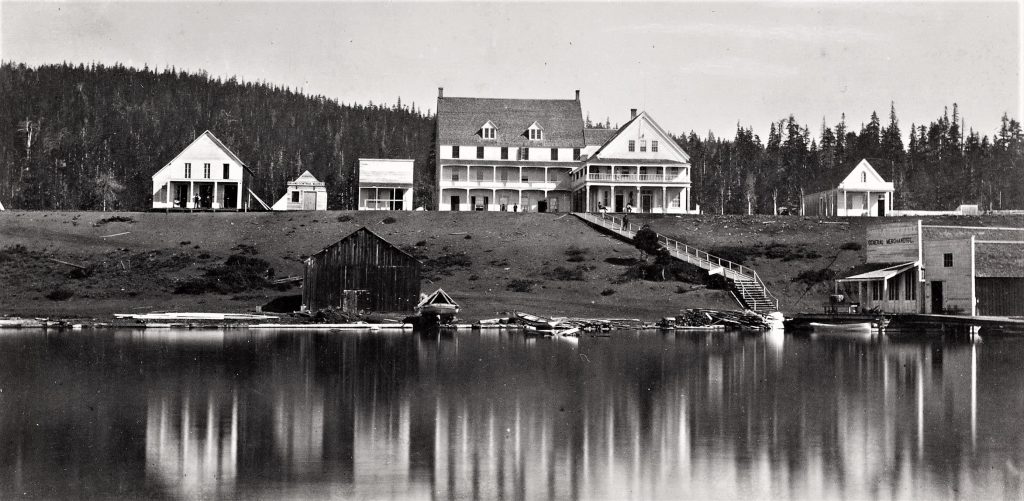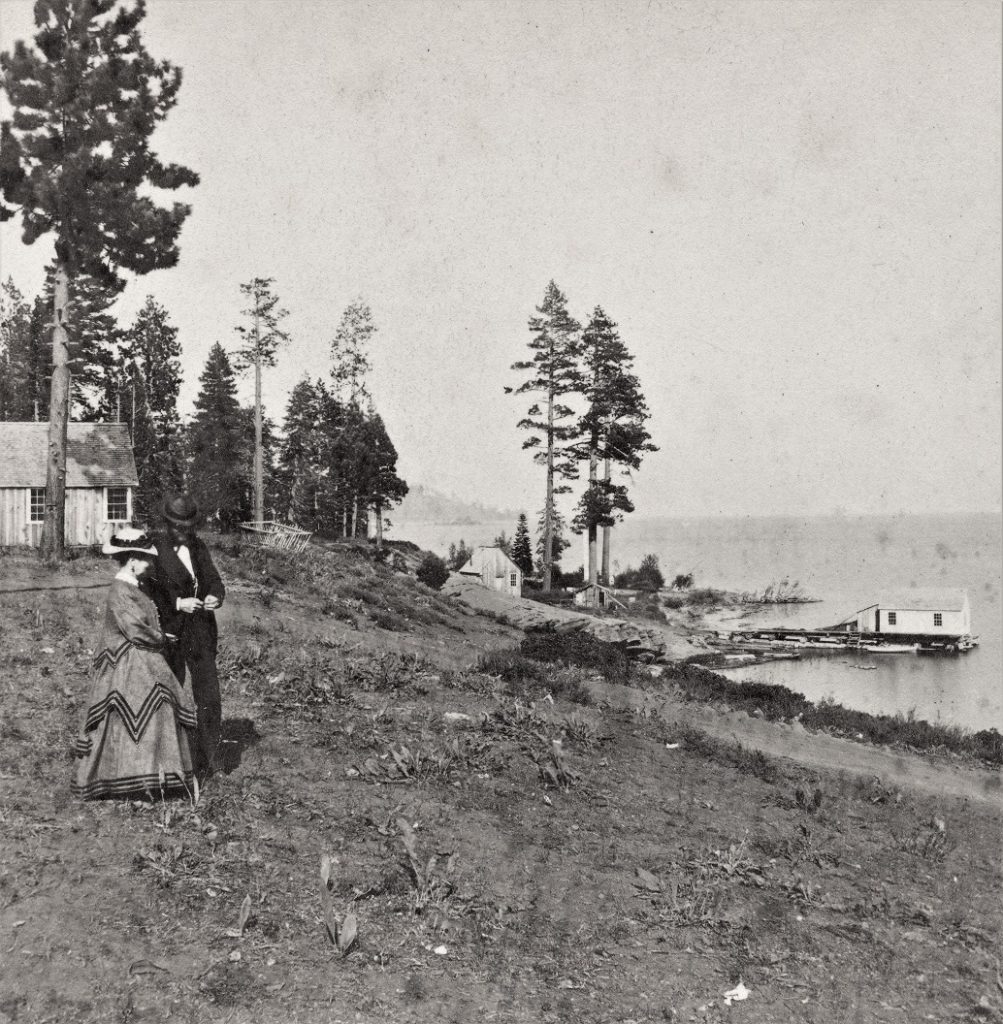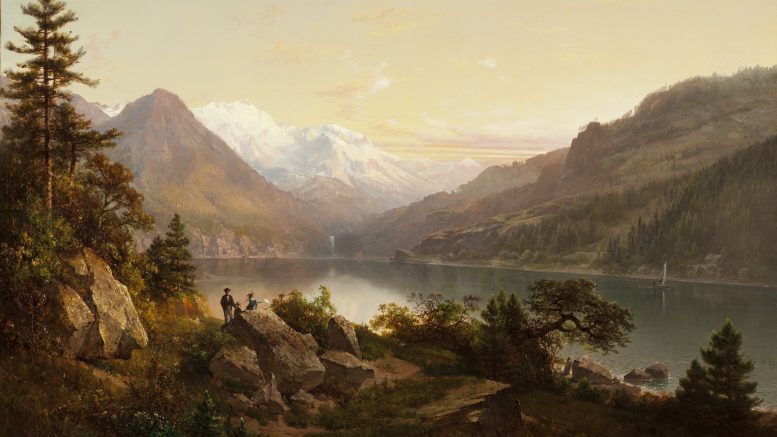By Casey Rafter
In a rising drone shot, the crystal-clear shimmer of Lake Tahoe expands, revealing stones and silt far below the surface of its unearthly blue water.
Such views continue to beckon to travelers by offering a getaway to snowy slopes, wooded bike trails, picturesque hiking paths and all manner of boating adventures on those magically glassy wave-tops.
Visit Tahoe’s recent tagline, “It’s awe and then some,” marks a 21st century perspective of the largest alpine lake in North America, nearly two hundred years after Euro-Americans first beheld it.
Contrasting this modern notion, historian Gary Noy’s latest book, “Gem of the Sierra: Schemes and Splendor in Nineteenth Century Lake Tahoe” explores what the earlier years of Caucasian settlement were like in the mountain marvel of the West. The book was published in July by University of Nebraska Press and delivers stories from a diverse array of myths, anecdotes and direct accounts of pioneers, explorers and, eventually, loggers and land developers. Virtually every type of personality who once descended on the tree-lined shores comes under the consideration of Noy’s pen.
Killing the shores, saving the shores

Times have changed since the historian himself first encountered the lake. Noy’s childhood trip to Tahoe from his family home in Grass Valley was much more arduous than it would be today. At that time, those destined for the great lake had to travel the now-decommissioned Highway 40 and a series of serpentine backroads through Donner Pass into the North Shore.
“What today takes an hour from where I live in Loomis would take hours and hours to get there,” Noy recalls. “And when you got there, the population was much, much smaller than the South Shore, which historically has always been the most populous part of the lake. It’s still beautiful, and I love going there, but I tend to not go on weekends.”
Historically, two issues had a significant impact not only on the lake itself, but on the economy and environment surrounding it: logging and damming. Noy covers extensively the multiple attempts to develop aqueducts to carry water into San Francisco. The effect of that, should it have ever gained a foothold, would have seen lake water rise by six feet.
“At least three or four times that was considered, and we still have parts of the remnants of it today,” Noy notes. “The dam at the Truckee River is really the outgrowth of that scheme.”
Logging had a much more consequential outcome. Noy said operations to process timber in the Lake Tahoe basin ended in the 1890s, partly because of outcry from the effect that industry had on the landscape. Noy stresses that – today – whatever logging takes place nearby happens as a means of fire and disease prevention.
“Within a matter of a year or two, all of the lumber mills and logging outfits just left because…the conservative estimate is two thirds of all the trees were cut down,” Noy reflects. “They just simply ran out of resources and left. It led to hearings, both on the state and federal level, about the health hazards that were being brought about by this excessive logging. The Truckee River … was clogged with sawdust. Parts of it were stained a kind of tea color. We look at Lake Tahoe and we think it’s always been pristine and beautiful, but it wasn’t.”
Lasting perspectives

Several familiar names and faces appear in the annals of Noy’s book, including a few notable personalities with a Sacramento-tie. Noy quotes Mark Twain, who contributed regularly to the Sacramento Union in the mid-1800s, who called Lake Tahoe the “fairest picture the whole earth affords.”
Though famous writers like Twain and John Muir sung the praises of the beautiful sights they discovered when visiting, there were a few travelers nonplussed by what they saw. Noy stiched in an anecdote from one such nay-sayer: Englishman J. W. Boddam-Whetham. The passage reads like what might today be a catty Yelp review.
“There were quite a few people that just didn’t care for Lake Tahoe, which always surprises me, but in many cases, they were Europeans,” Noy says. “They found it lacking or there wasn’t the hunting that he thought there was. Kind of sniffing at [the lake’s offerings] like the elite used to do.”
“Gem of the Sierra” also features several photographs of Tahoe taken in the mid-to-late-1800s. One captures the shore in Tahoe City in 1870 through the lens of eccentric photographer Eadward Muybridge. Noy calls Muybridge the inventor of modern-day cinematography for his photographs of running animals. These famous images were snapped at the Ben Ali Haggin Farm, a horse training facility eventually replaced by Haggin Oaks golf course.
The cover of Noy’s latest anthology is a painting by famed Yosemite painter Thomas Hill. Noy said finding the photo was serendipitous in that, for decades, the painting was miscredited as a painting of the aforementioned state park. The discovery of a letter by Hill corrected the misplaced beliefs of the painting’s setting.
“Thomas Hill described going to Lake Tahoe,” Noy recounts, “and he said, ‘I did this painting of Emerald Bay.’ It had the support academically to prove that it actually was Emerald Bay, and if you see the whole painting, it’s much more evident.”
He adds, “It also had the people in 19th century clothing, and I thought that’s just a perfect image for the subject of the book.”
Always a witty nonfiction writer, Noy also delves into several examples of local mythology created by those settling around the lake. One such yarn is a fable about a fairy princess who crossed paths with a salty sea captain. Another tall tale is taken from an 1860s account by San Franciscan I.C. Coggin, and involves him seeing a 600-foot serpent crashing through the woods along the shore. Coggin claimed that he was treed by the commotion – the creature forcing bears and wildlife to flee below him.
“The guy who wrote it was a very respected figure in San Francisco society; he wasn’t some nut case,” Noy points out. “It was at a time when those kinds of stories from a person like him had a tendency to be believed.”
For Noy, there’s one Tahoe spot that calls to him whenever he’s near the Gatekeeper’s Museum in Tahoe City.
“Right by the dam, if you walk out – right on the edge of the lake is a bench,” Noy explains. “You’re 10-feet from the lake and hardly anybody goes there. It’s an experience to just commune with the lake and there aren’t people that wander around… I just love the place.”


Be the first to comment on "New book by Sacramento historian reveals the early years of Lake Tahoe"